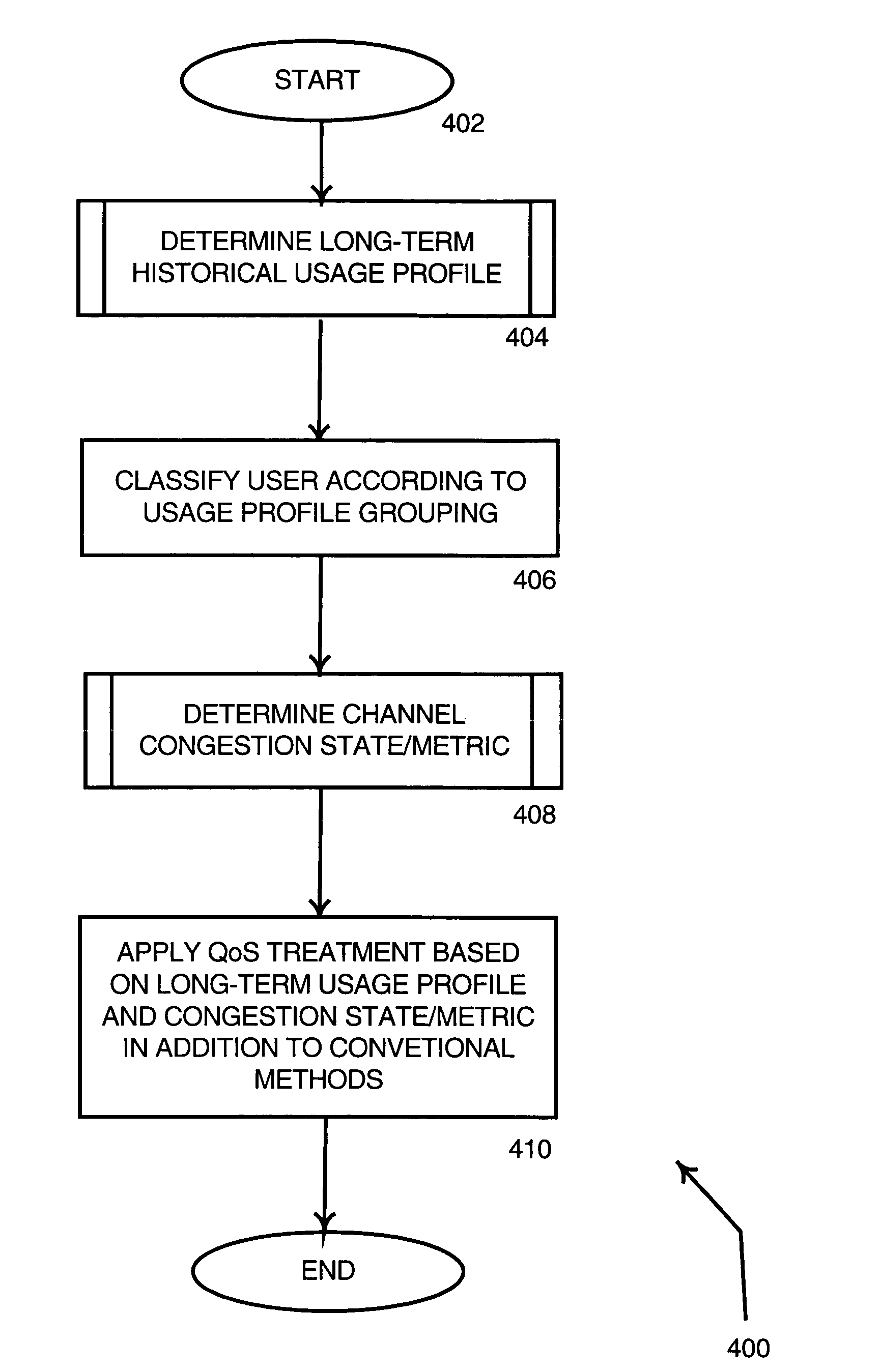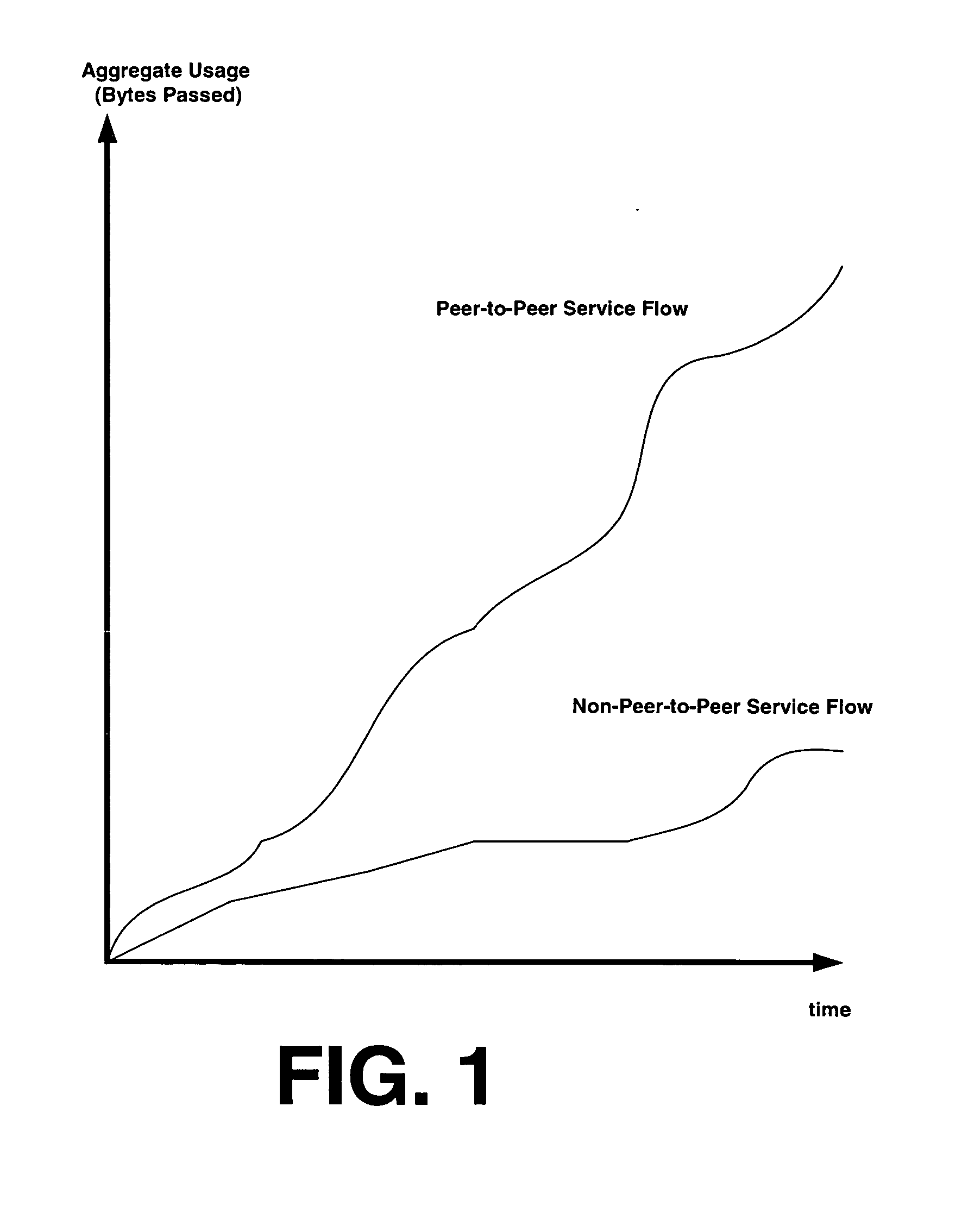Method and system for dynamically managing cable data bandwidth based on channel congestion state and subscriber usage profile
a technology of channel congestion and subscriber usage, applied in the field of broadband communication, can solve the problems of peer applications, more difficult to “shut down” these networks, and much more difficult to carry out successful litigation against the companies
- Summary
- Abstract
- Description
- Claims
- Application Information
AI Technical Summary
Problems solved by technology
Method used
Image
Examples
Embodiment Construction
As a preliminary matter, it will be readily understood by those persons skilled in the art that the present invention is susceptible of broad utility and application. Many methods, embodiments and adaptations of the present invention other than those herein described, as well as many variations, modifications, and equivalent arrangements, will be apparent from or reasonably suggested by the present invention and the following description thereof, without departing from the substance or scope of the present invention.
Accordingly, while the present invention has been described herein in detail in relation to preferred embodiments, it is to be understood that this disclosure is only illustrative and exemplary of the present invention and is made merely for the purposes of providing a full and enabling disclosure of the invention. This disclosure is not intended nor is to be construed to limit the present invention or otherwise to exclude other embodiments, adaptations, variations, m...
PUM
 Login to View More
Login to View More Abstract
Description
Claims
Application Information
 Login to View More
Login to View More - R&D
- Intellectual Property
- Life Sciences
- Materials
- Tech Scout
- Unparalleled Data Quality
- Higher Quality Content
- 60% Fewer Hallucinations
Browse by: Latest US Patents, China's latest patents, Technical Efficacy Thesaurus, Application Domain, Technology Topic, Popular Technical Reports.
© 2025 PatSnap. All rights reserved.Legal|Privacy policy|Modern Slavery Act Transparency Statement|Sitemap|About US| Contact US: help@patsnap.com



